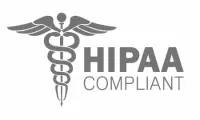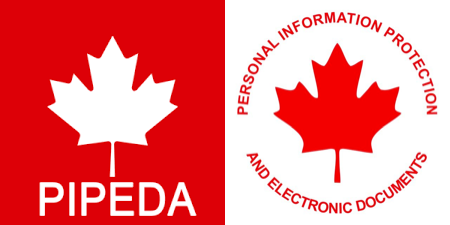FAQ

FAQs about individual therapy
Q. How is Inner Immersion different from other mental health programs?
Inner Immersion is a unique method for mental health practitioners to get to the heart of their clients’ issues gently but very quickly. Unlike conventional therapy models, Inner Immersion comprises of a
unique 4-6 hour group session followed by a one-on-one follow-up session. This
intensive format allows for deep, uninterrupted exploration of core issues,
facilitating rapid transformation and addressing root causes rather than just
symptoms.
Rooted in the founder, Jose Hernandez’s near-death experience, the program
uniquely contextualizes life’s experiences within the realms of life, death,
and the endurance of consciousness. Underpinned by empowerment and positive
regard theories, Inner Immersion enables facilitators to build trust quickly
and achieve breakthroughs in a single session.
By combining extended engagement with a comprehensive approach that includes somatic practices, guided visualizations, and neuroplasticity-informed interventions, Inner Immersion
offers a powerful, efficient path to personal growth and behavioral change,
often yielding profound insights and shifts within just one session, helping
participants to connect with innate resources such as resilience, hope,
courage, wisdom, self-love, and self-esteem.
Q. Who are the typical participants in the Inner Immersion program?
- Inner Immersion’s primary clients are public sector, non-profits and recovery centers. We focused on this area as we have the greatest chance to elicit the most significant shift and positive change here. Our business model was created so that we could offer a high level of professional skill and experience, with an effective model, to those who need it most but for whom this level of help would normally be out of reach. Typical participants include:
· Those grappling with trauma, addiction, or mental health challenges like anxiety and depression
· Individuals facing relationship difficulties or life transitions, including end-of-life
· Professionals experiencing burnout or seeking enhanced well-being
· Survivors of adverse childhood experiences (ACEs)
Q. Where are the Inner Immersion Sessions held?
A. Sessions are held in recovery centers, hospitals, Indigenous community centers, longhouses and roundhouses, youth centers (with youth aged 18+), or prisons. The physical space needs to be a contained and private room with a door that can close, ideally with windows that can be darkened, with comfortable chairs, a table at the front of the room and with audio visual equipment.
Q. What are the typical results of the Inner Immersion experience for participants?
Q. Is there data to confirm these results?
Surveys are now taken at the end of the program and testimonies are accumulated. See graphs:
Shifts Evident in Drawings
Shifts Evident in Questions
Q. When I’m certified, would I be contracting directly with the organization I work with, or with Inner Immersion?
Q. How would I be compensated for the clients I work with, and by who?
Q. Can I continue working in my private practice along with Inner Immersion?
Q. Once I become a certified Inner Immersion facilitator, can I use the program with my own clients in private practice?
A. While certification in Inner Immersion is a significant achievement, the program is currently reserved exclusively for use with Inner Immersion clients. This limitation will remain in place for the next several years as we conduct comprehensive research on the program’s effectiveness and outcomes.
As a Certified Inner Immersion Facilitator, you’ll have the unique opportunity to:
• Participate in groundbreaking research that’s shaping the future of mental health care
• Work directly with Inner Immersion clients, applying cutting-edge techniques
• Contribute to the advancement of innovative therapeutic approaches
By focusing our efforts on a controlled client base, we ensure the highest quality of care and data collection. This approach allows us to refine and improve the program based on rigorous scientific analysis.”
Q: Is there a board of directors for Inner Immersion, or how is the leadership structured?
Q: Do you prescribe medication as part of the Inner Immersion program?
A: No, Inner Immersion does not prescribe medication. Our program focuses on non-pharmaceutical approaches to mental health and personal growth. We emphasize developing inner resources, coping strategies, and resilience through facilitated group and individual sessions. If a facilitator feels a participant may require medication management or further intervention, we refer the participant back to the referring Client and with the recommendation that they consult with their primary care physician or a psychiatrist through the Client’s network.
Q: What qualifications are required to become an Inner Immersion Facilitator?
A. To become a Certified Inner Immersion Facilitator, candidates must meet specific licensing requirements and professional qualifications. Eligible candidates must hold a current, valid license as a mental health professional in their jurisdiction. This may include:
· Licensed Clinical Psychologists
· Licensed Clinical Social Workers
· Licensed Professional Counselors
· Licensed Marriage and Family Therapists
· Licensed Mental Health Counselors
Q: How does Inner Immersion ensure the safety and confidentiality of participants?
A: Inner Immersion prioritizes participant safety and confidentiality. All facilitators are trained in maintaining strict confidentiality protocols. Group sessions operate under clear guidelines to create a safe, respectful environment. We adhere to relevant privacy laws and ethical standards in mental health practice. However, as with any mental health service, there are limits to confidentiality in cases where there is a risk of harm to self or others.


